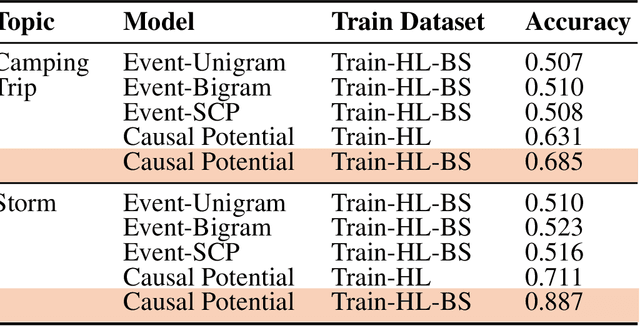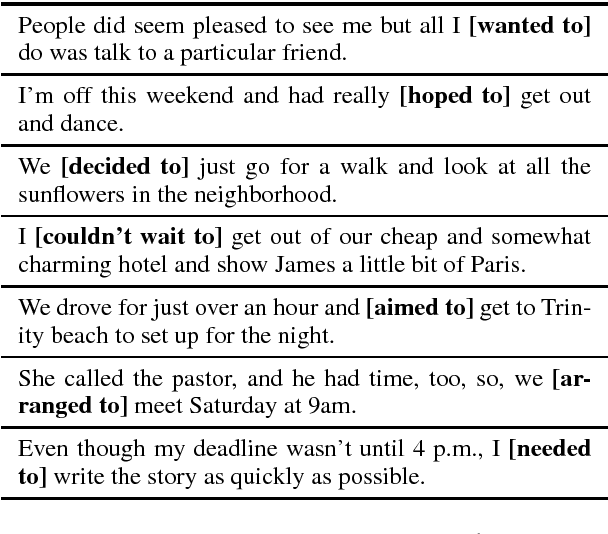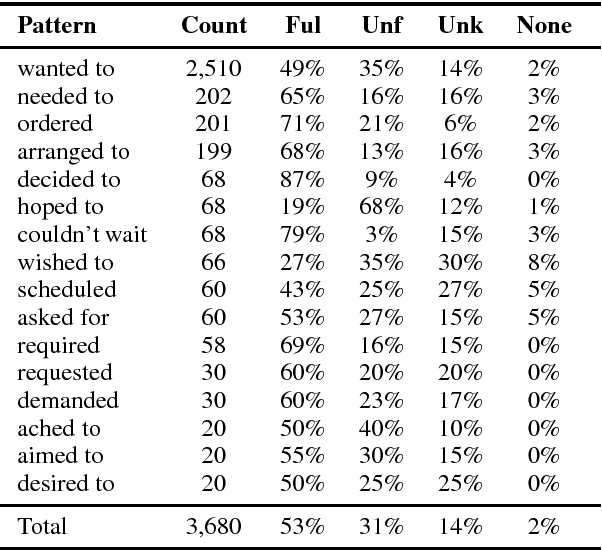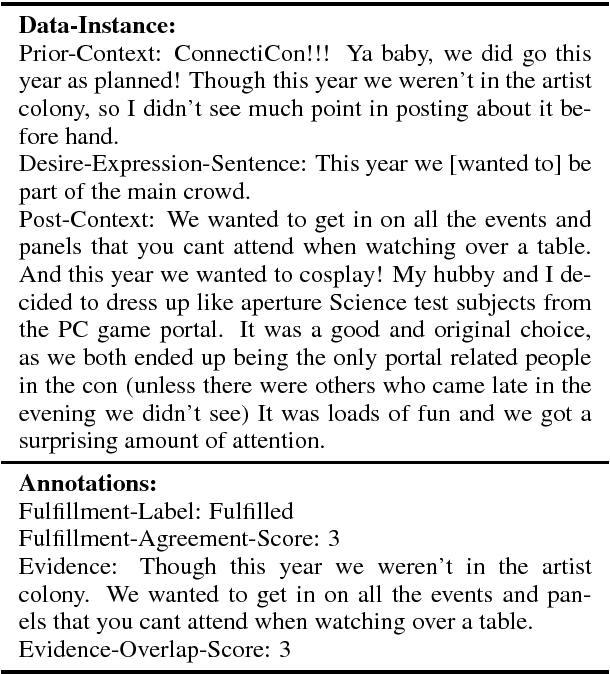Marilyn A Walker
Inference of Fine-Grained Event Causality from Blogs and Films
Aug 30, 2017



Abstract:Human understanding of narrative is mainly driven by reasoning about causal relations between events and thus recognizing them is a key capability for computational models of language understanding. Computational work in this area has approached this via two different routes: by focusing on acquiring a knowledge base of common causal relations between events, or by attempting to understand a particular story or macro-event, along with its storyline. In this position paper, we focus on knowledge acquisition approach and claim that newswire is a relatively poor source for learning fine-grained causal relations between everyday events. We describe experiments using an unsupervised method to learn causal relations between events in the narrative genres of first-person narratives and film scene descriptions. We show that our method learns fine-grained causal relations, judged by humans as likely to be causal over 80% of the time. We also demonstrate that the learned event pairs do not exist in publicly available event-pair datasets extracted from newswire.
* Events and Stories in the News Workshop, ACL 2017
Learning Fine-Grained Knowledge about Contingent Relations between Everyday Events
Aug 30, 2017

Abstract:Much of the user-generated content on social media is provided by ordinary people telling stories about their daily lives. We develop and test a novel method for learning fine-grained common-sense knowledge from these stories about contingent (causal and conditional) relationships between everyday events. This type of knowledge is useful for text and story understanding, information extraction, question answering, and text summarization. We test and compare different methods for learning contingency relation, and compare what is learned from topic-sorted story collections vs. general-domain stories. Our experiments show that using topic-specific datasets enables learning finer-grained knowledge about events and results in significant improvement over the baselines. An evaluation on Amazon Mechanical Turk shows 82% of the relations between events that we learn from topic-sorted stories are judged as contingent.
* SIGDIAL 2016
Modelling Protagonist Goals and Desires in First-Person Narrative
Aug 29, 2017



Abstract:Many genres of natural language text are narratively structured, a testament to our predilection for organizing our experiences as narratives. There is broad consensus that understanding a narrative requires identifying and tracking the goals and desires of the characters and their narrative outcomes. However, to date, there has been limited work on computational models for this problem. We introduce a new dataset, DesireDB, which includes gold-standard labels for identifying statements of desire, textual evidence for desire fulfillment, and annotations for whether the stated desire is fulfilled given the evidence in the narrative context. We report experiments on tracking desire fulfillment using different methods, and show that LSTM Skip-Thought model achieves F-measure of 0.7 on our corpus.
 Add to Chrome
Add to Chrome Add to Firefox
Add to Firefox Add to Edge
Add to Edge